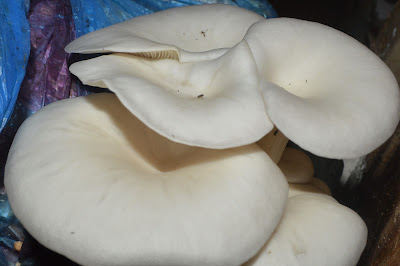FUNGI AND PHARMACEUTICAL INDUSTRY: THE DISCOVERY OF PENICILLIN FROM PENICILLIUM.
Penicillin one of the world’s first antibiotics was discovered in London in September of 1928. Penicillin is a group of antibiotics which include penicillin G, penicillin V, procaine penicillin, and benzathine penicillin. Dr. Alexander Fleming, the bacteriologist on duty at St. Mary’s Hospital, returned from a summer vacation in Scotland to find a messy lab bench and a good deal more.
Upon examining some colonies of Staphylococcus aureus, Dr. Fleming noted that a mold called Penicillium notatum had contaminated his Petri dishes. After carefully placing the dishes under his microscope, he was amazed to find that the mold prevented the normal growth of the staphylococci.
It took Fleming a few more weeks to grow enough of the persnickety mold so that he was able to confirm his findings. His conclusions turned out to be phenomenal: there was some factor in the Penicillium mold that not only inhibited the growth of the bacteria but, more important, might be harnessed to combat infectious diseases.
As Dr. Fleming famously wrote about that red-letter date: “When I woke up just after dawn on September 28, 1928, I certainly didn’t plan to revolutionize all medicine by discovering the world’s first antibiotic, or bacteria killer. But I guess that was exactly what I did.”
Fourteen years later, in March 1942, Anne Miller became the first civilian patient to be successfully treated with penicillin, lying near death at New Haven Hospital in Connecticut, after miscarrying and developing an infection that led to blood poisoning. As we celebrate Alexander Fleming’s great accomplishment, we will recall that penicillin also required the midwifery of Dr. Howard Florey, Dr. Ernst Chain and Dr. Norman Heatley, as well as an army of laboratory workers.
Mamaland Mushroom Farms (2015).
E-Mail:- Mamalandmushroomproject@gmail.com,
Phone: +255621080300.
Twitter/Facebook/Linkedin/Google+:- Mamaland Mushroom Farms.
Blog:- Mamalandmushroomproject.blogspot.com.
E-Mail:- Mamalandmushroomproject@gmail.com,
Phone: +255621080300.
Twitter/Facebook/Linkedin/Google+:- Mamaland Mushroom Farms.
Blog:- Mamalandmushroomproject.blogspot.com.
© Mamaland Mushroom Farms (2015).




























